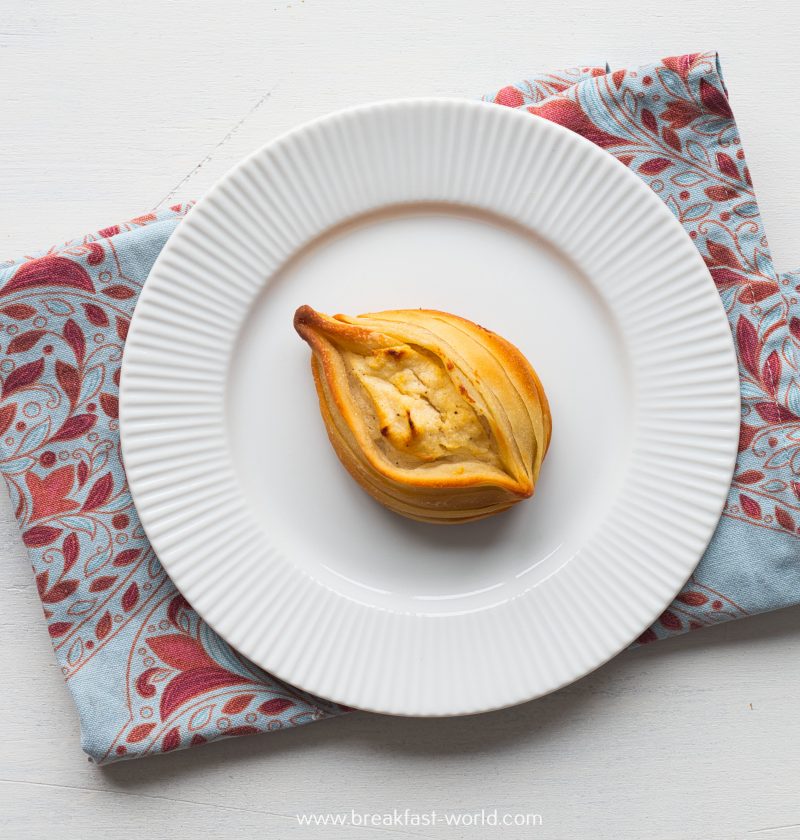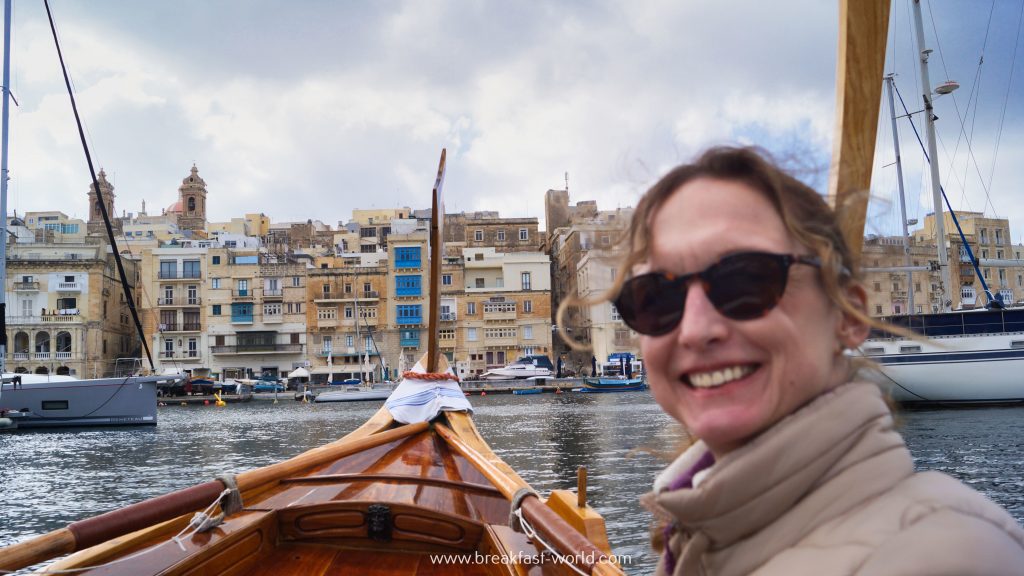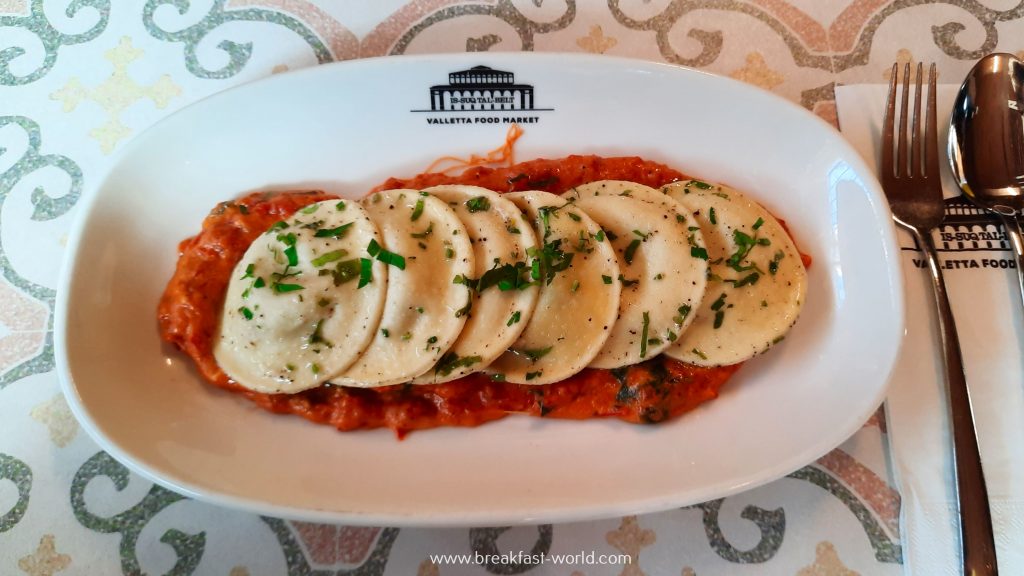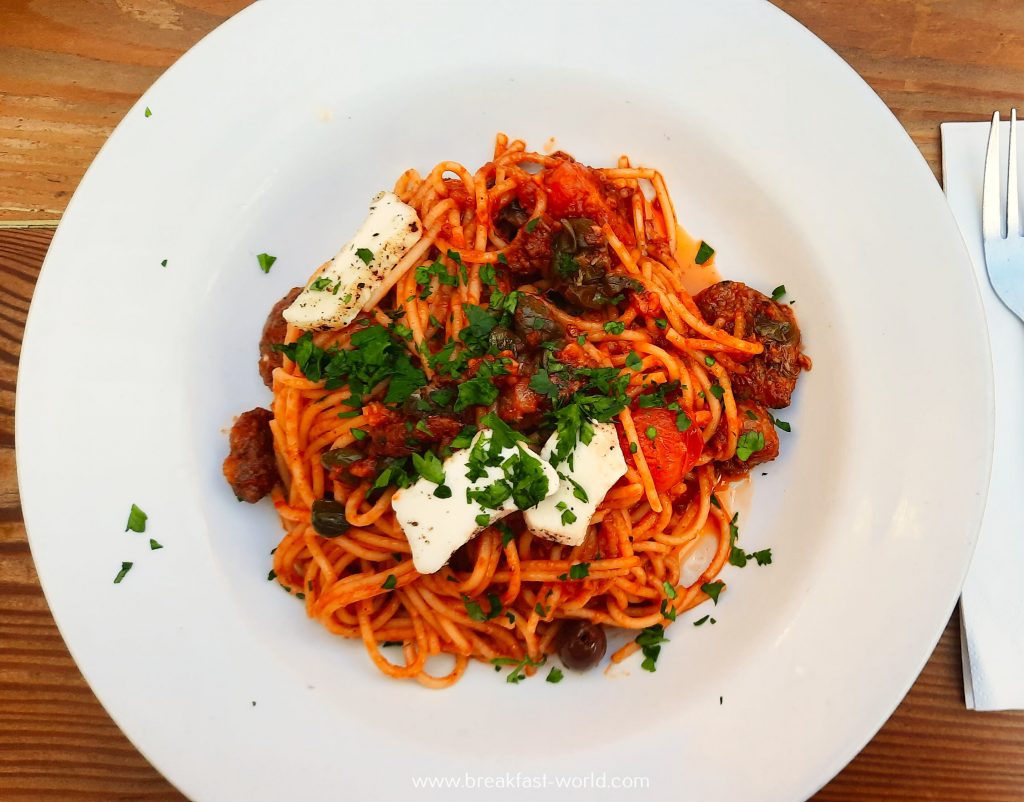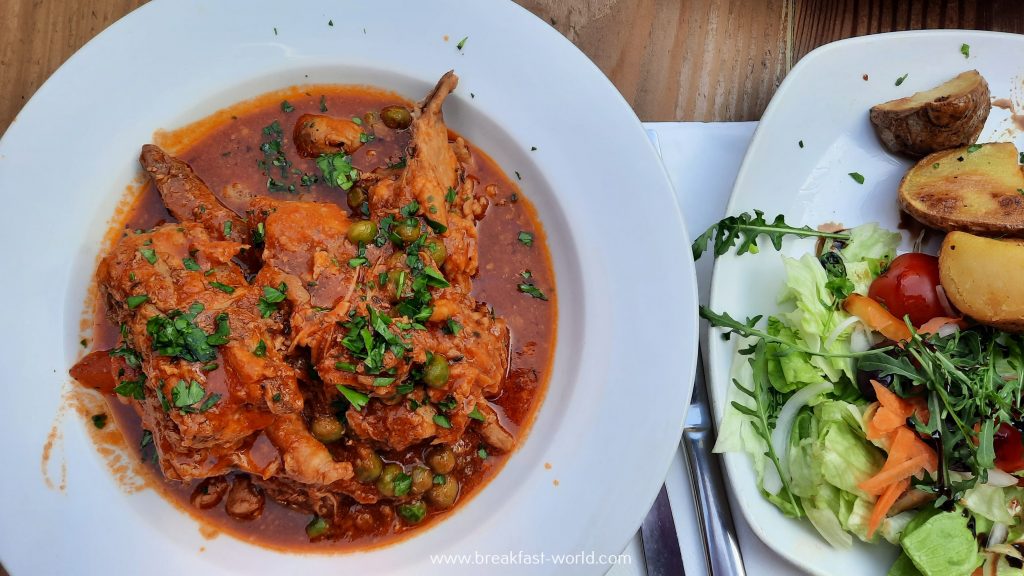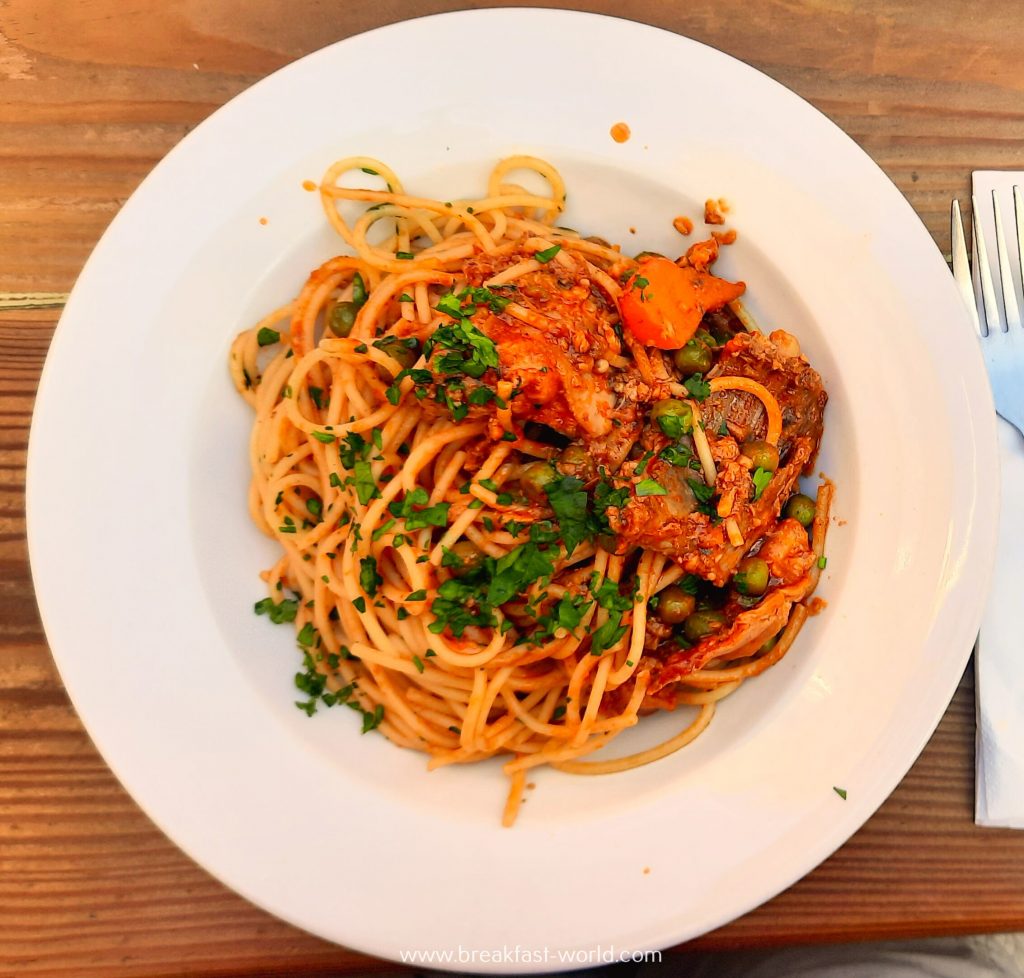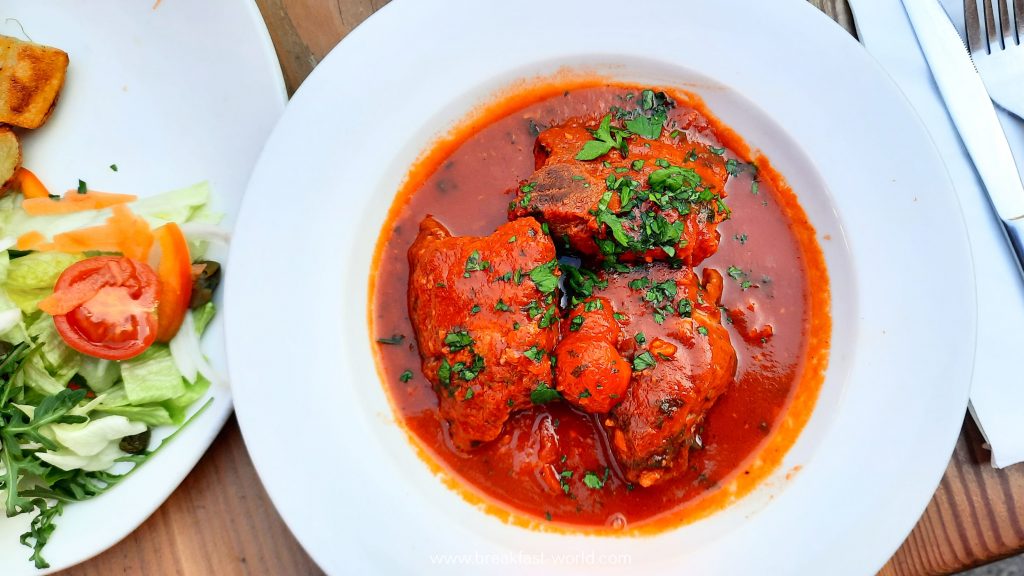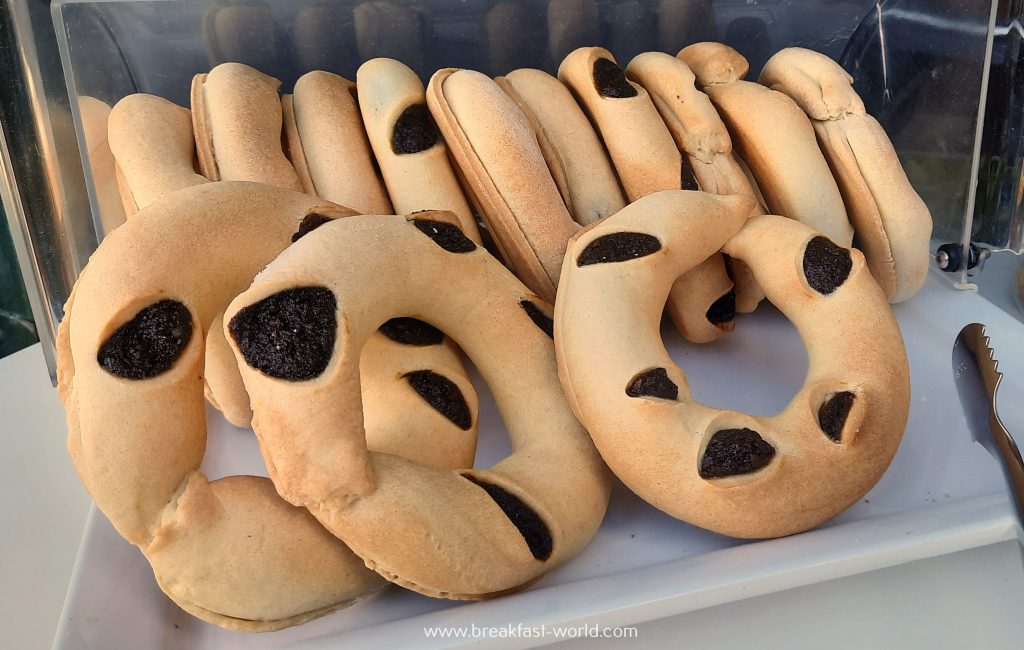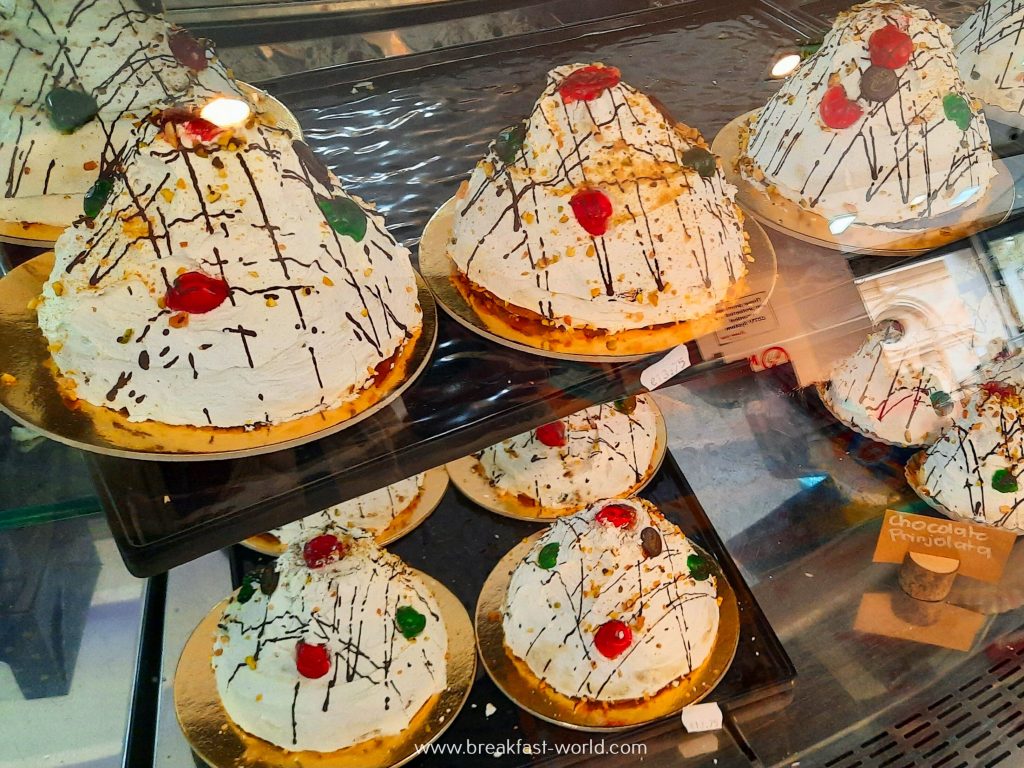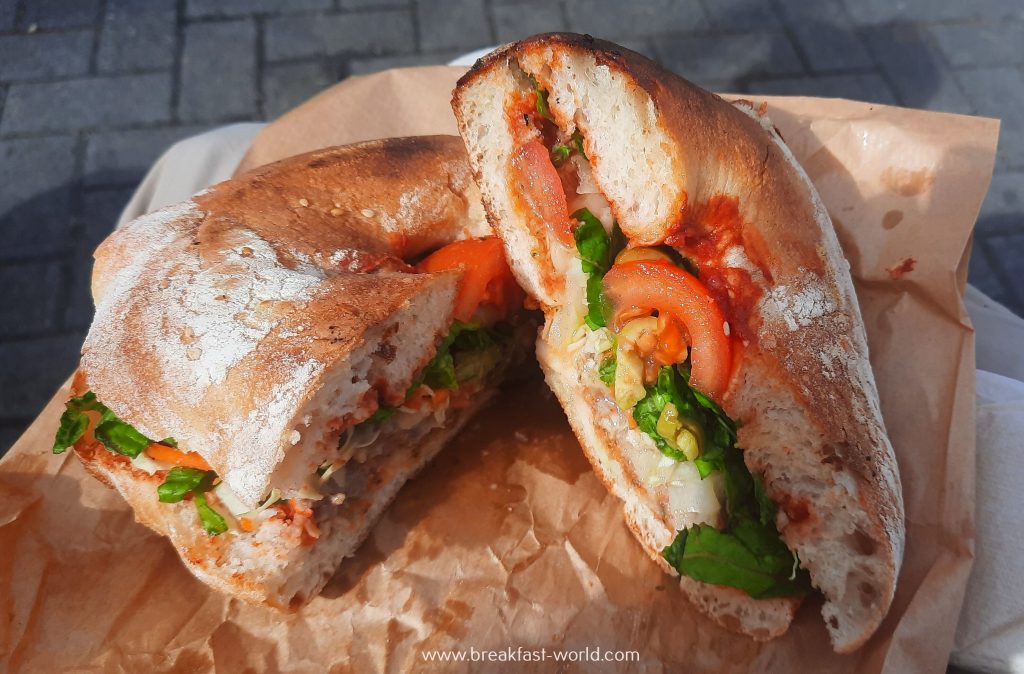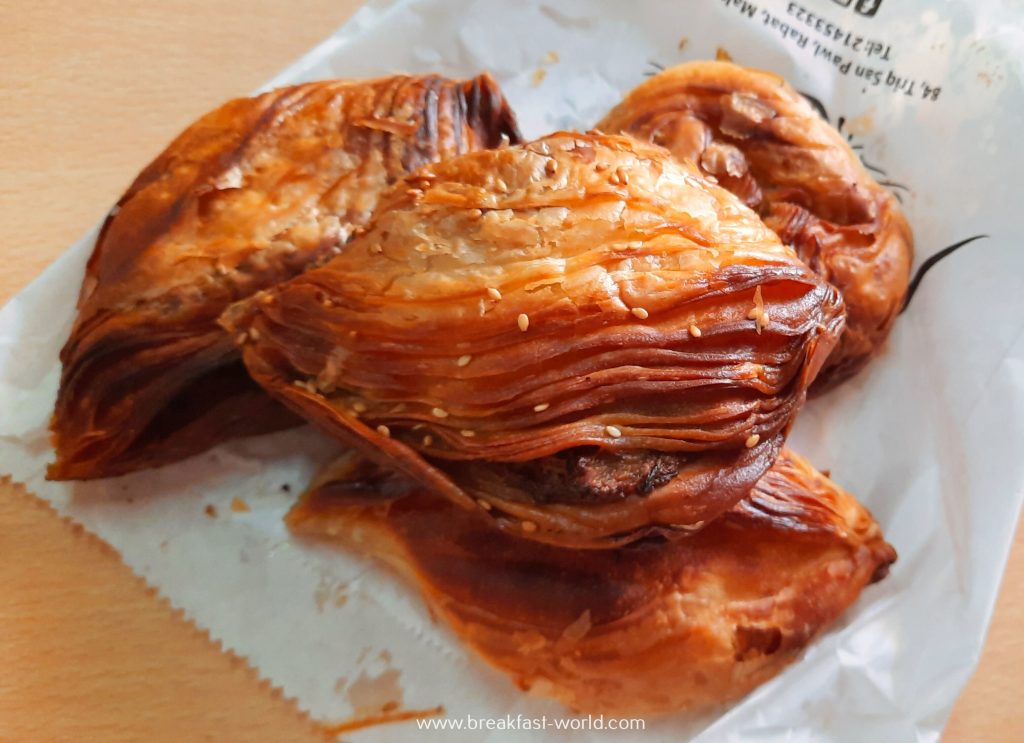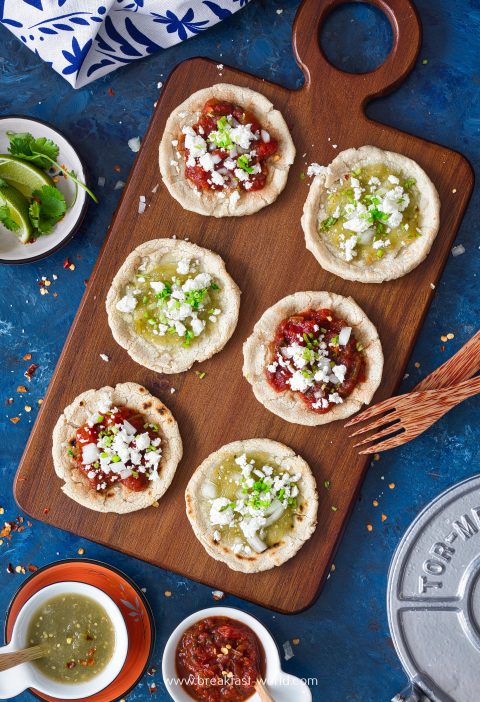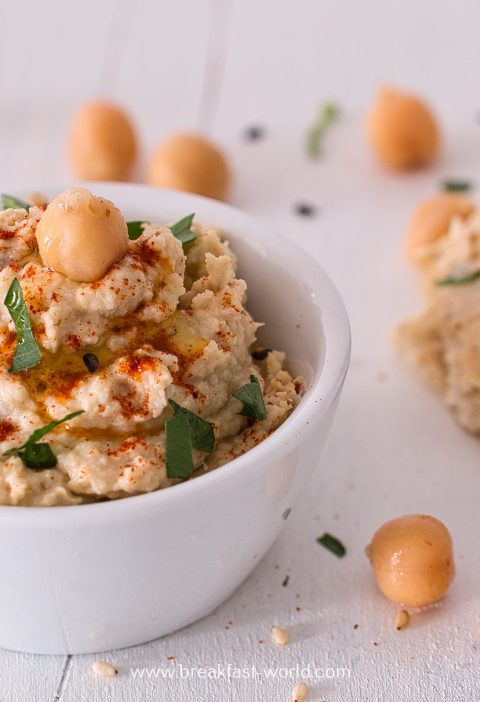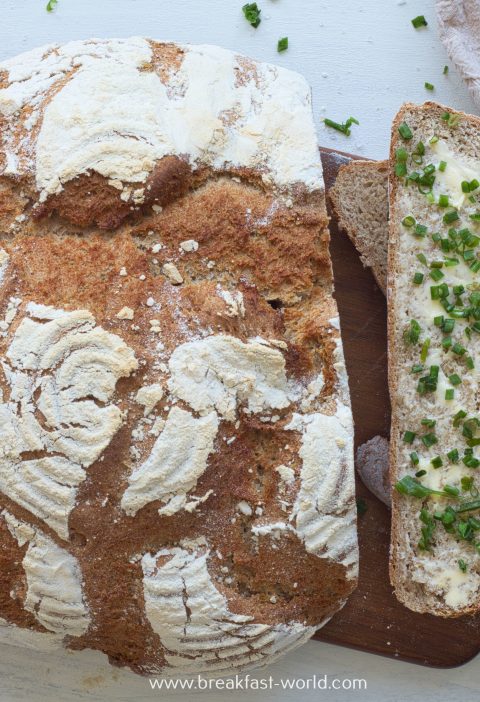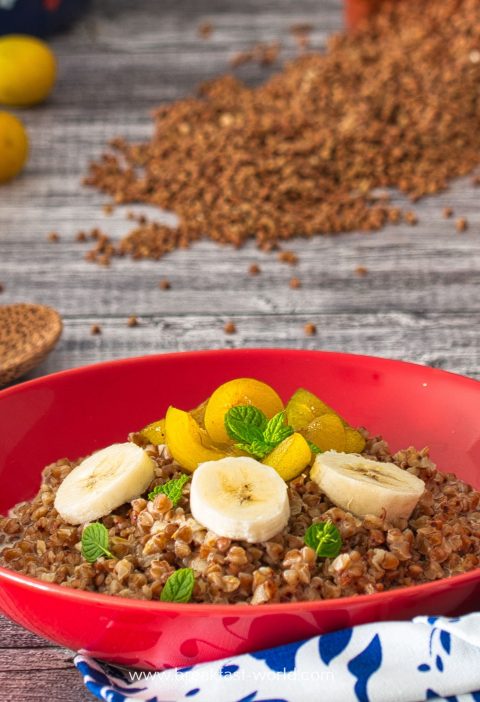Pastizzi are crispy dumplings made from a kind of puff pastry, usually filled with ricotta or pea filling, traditionally eaten for breakfast in Malta.
However, before I tell you more about pastizzis, here are some general information about Maltese cuisine.
Jump to RecipeMaltese cuisine
Typical Maltese dishes are simple, hearty, and extremely delicious! I can assure this, having tried many local dishes during my trip to Malta in the spring of 2024.
Due to its geographical location, Maltese cuisine is Mediterranean, particularly influenced by Italian (Sicilian) cuisine. Thus, for those who, like me, enjoy pasta, Malta is the perfect place to be.
My favorite were Ravioli filled with Maltese sheep or goat cheese (Gbejniet) served with tomato sauce:
Pasta with Zalzett, a typical Maltese sausage, and Gbejniet taste just as good, if not better:
The actual traditional dish in Malta is fenek (rabbit). It is braised or fried with herbs, garlic and wine mostly served with fried potatoes and fresh salad:
Pasta fans – like me – should order rabbit pasta straight away:
Another typical Maltese dish is Bragioli. These are beef rolls filled with minced meat, bacon, and herbs, braised in tomato sauce:
Fish dishes are also frequently on the menu in Malta.
The local fish Lampuki (Dorado), which is only available fresh from August to December, or other types of fish , are often braised or fried (especially breaded, similar to our Wiener Schnitzel):

Of course, there are also numerous sweet dishes in Malta. My favorite are Qaghaq tal-Ghasel (honey rings):
The filling consists of dark syrup and numerous spices. The taste is reminiscent of gingerbread.
Typical for Malta are also Cannoli (deep-fried pastry tubes filled with cream):
A specialty that is only available during Carnival is Prinjulata:
The dessert gets its name from the Maltese word "prinjol" (pine nuts). Pine nuts are used both in the filling and the topping. In terms of taste, Prinjolata resembles a Christmas fruitcake. It is garnished with buttercream, chocolate, nuts, and cherries.
Breakfast in Malta
The typical breakfast in Malta varies depending on individual taste. It often consists of bread, butter, jam (from local figs or prickly pears) or honey and fresh fruit. Coffee or tea is also served.
By the way, original Maltese foods, such as jam, honey, sheep's cheese, tomato paste, capers, wine, etc., can be purchased at the Maltaladen in Frankfurt-Schwanheim. You can also order online from the two very nice owners, who also come from Malta. Thumbs up!
Ftira is a typical Maltese bread. This is a type of round flatbread with a hole in the middle. Sometimes the Ftira is soft and tastes reminiscent of ciabatta. Sometimes it is crispy on the outside and airy on the inside like sourdough bread. Personally, I prefer the latter.
Ftira is cut open and filled with different ingredients. The variant with olive oil, lettuce, tomatoes, onions and capers is typically Maltese:
But other fillings such as tuna, cheese or fried meat also taste very good.
By the way, Ftira is not only eaten for breakfast, but also as a snack throughout the day.
Cafés and restaurants also offer continental breakfast dishes such as croissants, omelettes, pancakes or French toast. Due to the British influence, the “English Breakfast” (baked beans, ham, eggs) is of course very popular.
The most traditional Maltese breakfasts in my opinion are Pastizzi.
Pastizzi
Pastizzi are crispy filled dumplings made from a type of puff pastry.
They are an integral part of Maltese cuisine and are eaten not only for breakfast but also as a snack throughout the day. The dumplings are available for purchase in special Pastizzeriji, but also in cafés, bakeries and snack stands, usually for less than 1 euro.
The phrase “jinbieghu bhall-pastizzi” (“sell like pastizzi”) corresponds to the German phrase “go away like hot cakes.”
Traditionally, pastizzi are filled with either ricotta or pureed green peas. The pea stuffing probably came into use during English rule. Both versions taste very good, although I prefer the ricotta filling.
However, they are also very filling due to the rich dough. Depending on size, one or two pieces per person are enough.
Traditionally, the dumplings are shaped by hand and then baked in the oven until golden brown and crispy. In Malta you can also buy pastizzi frozen.
The preparation is not that easy. In order for the pastry to be really crispy, craftsmanship and patience are required. Making the dough is time-consuming. Forming the dumplings also requires some practice. It's best to prepare your dough and filling a day in advance.
Instead of making your own dough, you could theoretically also use ready-made puff pastry from the refrigerated shelf. However, the result would not come close to the real pastizzis in terms of shape or taste.
That's why I decided to try an authentic recipe and present it to you here. And actually it's not that difficult! I was more than happy with the result!

Pastizzi
Zutaten
For the dough:
- 450 g flour
- 220 g margarine at room temperature
- 60 g margarine at room temperature
- 220 ml water
- 1/2 tsp. salt
For the pea filling:
- 200 g green peas (fresh or frozen)
- 1/2 onion
- 1 garlic cloves
- 2 tbsp. olive oil
- 1/4 tsp. pimento
- 1 tsp. Tomato paste
- salt
- pepper
For the ricotta filling:
- 250 g Ricotta
- 10 g butter
- 25 g semolina
- 1/2 egg
- salt
- pepper
Anleitungen
For the dough:
- To make the dough, mix margarine and lard and set aside.
- Mix flour, salt and water in a bowl.
- Knead and form a smooth dough.
- Form the dough ball into a rectangle (lengthways) with your hands. Roll over it several times with the rolling pin until the dough is approx. 2 cm thick.
- Roll the rectangle in, then turn it 90 degrees so that it lies lengthwise.
- Repeat the process of rolling out, rolling up and twisting 8-10 times. This creates an elastic, firm dough.
- Form the dough into a ball and spread it with a quarter of the margarine-lard mixture (with your hands).
- Place the dough in a freezer bag and chill for about 1 hour.
- Take the dough out of the fridge. It should no longer spring back when touched.
- Using your hands, press the dough into a rectangle, this time across. One hand lies in the middle of the dough while the other hand stretches and pulls the dough longer on one side.

- Switch hands and extend the dough to the other side. Pull until the dough is about 50cm long and 15cm wide.

- Now roll out the dough to 70cm long and 20cm wide.

- Spread the margarine-lard mixture over the dough, but reserve a quarter of it.

- Roll carefully from the narrow side. At the same time, carefully pull back the dough and make it thinner. Pull carefully to avoid tearing the dough and roll tightly to avoid air bubbles.

- The roll may end up being thinner and the middle thicker.
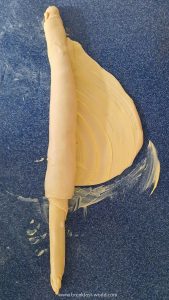
- If this is the case, fold or push in the ends so that the roll has a similar diameter throughout.

- Spread with the remaining margarine and lard mixture.

- Wrap with cling film and chill overnight.

For the pea filling (make on the first day):
- Blanch peas. To do this, cook in salted water for about 2 minutes until al dente, then rinse in ice water and set aside.
- Peel the onion and garlic, chop finely and sauté in hot oil.
- Stir in pimento, add tomato paste and peas. Add a few splashes of water to help the peas cook better.
- Season with salt and pepper, puree, place in a bowl and chill.
For the ricotta filling (make on the first day):
- Bring 150 ml water and butter to boil.
- Stir in semolina and turn off the stove.
- In a mixing bowl, whisk the egg with salt and pepper, then stir in the ricotta. Stir into the semolina mixture and place in the refrigerator.
For completion (the following day):
- Preheat the oven to 220 °C (fan oven).
- Line the baking tray with baking paper.
- Remove fillings from refrigerator.
- Remove the rolling pin from the cling film. Stretch gently until it has doubled in length and is about 5cm wide.
- Cut dough into 5cm sections.
- Lay them out flat so that the layer spiral faces upwards.
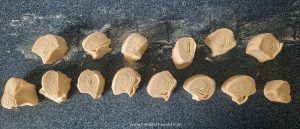
- Hold the piece of dough in both hands with your thumbs in the middle. Press and twist the dough pieces to form a small "cup."

- Turn the cup over and stretch it a little more until the opening is about 10cm in diameter.
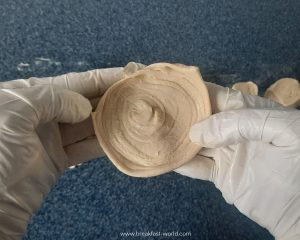
- Add some of the ricotta filling.
- Press the top of the cup together to form a boat, leaving a seam with an opening of approx. 1 cm.
- Place on the baking sheet with the seam facing up.

- Proceed in the same way for the pastizzi with pea filling, but place it on the tray with the closed seam to the side.
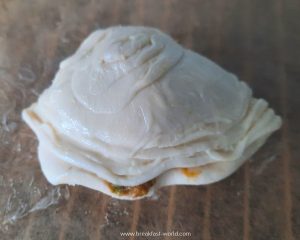
- Bake the pastizzi in the hot oven (center) for about 25 minutes until golden.
- Enjoy warm.
If you like this post, I look forward to a rating (star bar) or a nice comment!
Thanks a lot!
Perhaps you would also like to subscribe to my page. If so you will be regularly informed about new posts.

